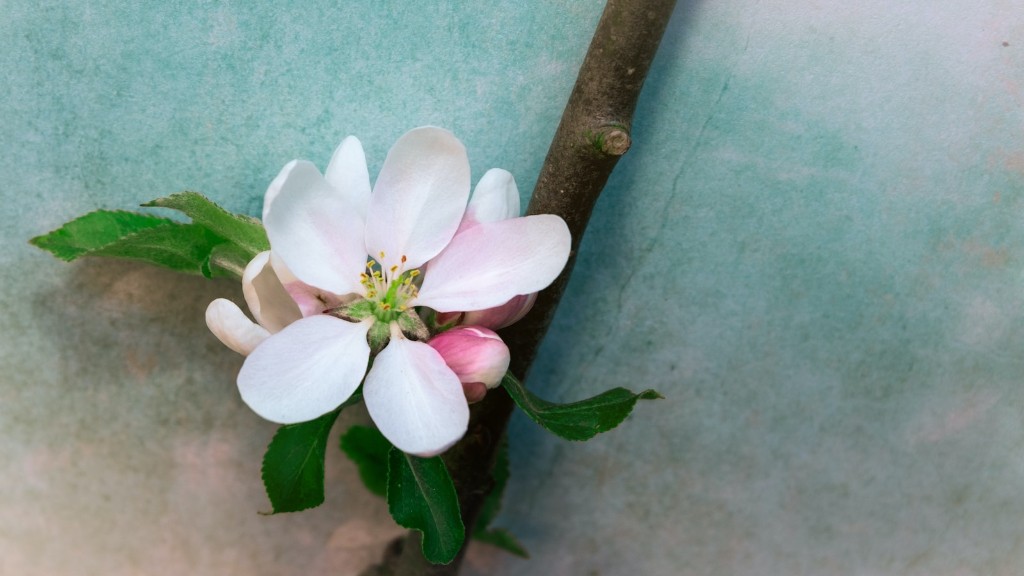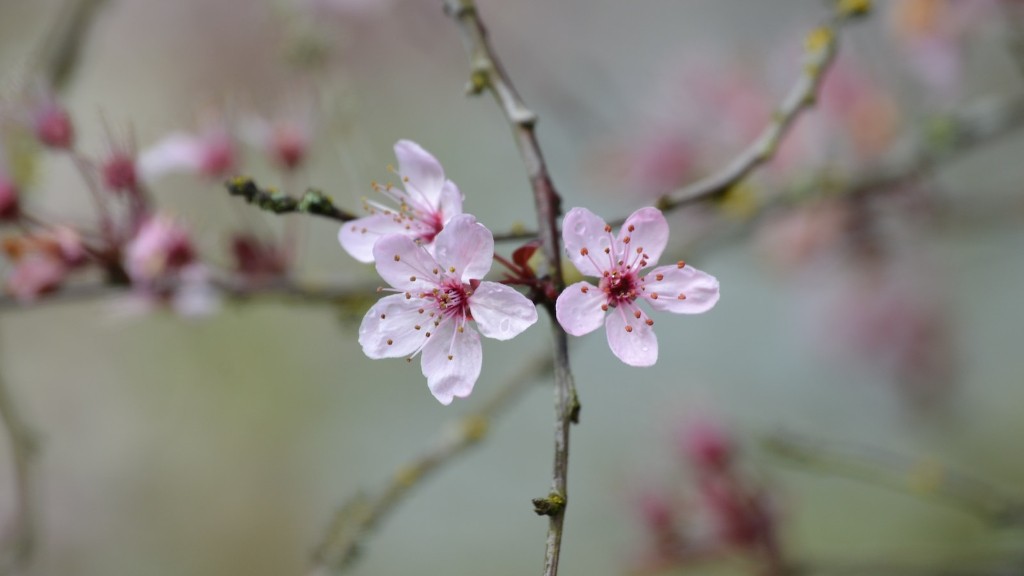The perplexing question of why one’s apple tree didn’t produce fruit this year naturally arises for those inexperienced with horticulture and agronomy. Generally, the answer is more complex than one might expect, and usually involves multiple factors. Below I’ll outline the most common reasons why an apple tree didn’t fruit, as well as tips on how to ensure your tree is fruitful in future.
The first factor to consider is the age of your apple tree. Trees often don’t begin to blossom or bear fruit until they’re between four and five years of age and can take up to 10 years to reach their full fruition. If your tree is still in its juvenile stage, then it’s likely that it isn’t yet at fruiting age.
Another potential cause is flowering. Apple trees require a certain amount of chill hours, or days temperatures below 45°F (7°C) in the winter months, to flower. If the spring weather is too warm or your tree didn’t receive enough chill hours, then it will not blossom. Furthermore, if there isn’t a bee or pollinator of some sort it won’t be fertilized, thus preventing your tree from bearing any fruit.
Tree health can also be an issue. If your tree isn’t receiving enough water and nutrients then it won’t be able to produce a significant amount of apples, if any. Stress caused by pests, extreme cold, and environmental factors can also stunt fruiting. Additionally, lack of pruning or exceedingly heavy pruning can prevent your tree from flowering, or reduce the number of fruit produced
Finally, it’s important to remember the type of apple tree you’re growing. Many apple tree varieties are self-sterile, meaning that they need a different tree in order to cross-pollinate and bear fruit. If there isn’t a compatible tree nearby then your apple tree won’t produce any apples.
How to Promote Fruit Bearing in Future
Now that I’ve outlined the potential reasons why your apple tree didn’t bear fruit, let’s look at the steps you can take to ensure the tree is more fruitful in years to come.
Firstly, check the age of your apple tree. If it’s still adolescent, then be patient, as it’ll likely begin to fruit as it matures. If your tree is at fruiting age or older and still isn’t producing any apples then you may need to give it some extra TLC.
Ensure your tree is optimally watered and fertilized, as this will help its fruitfulness. Be on the lookout for pests, disease, and environmental factors that may stress the tree, and address any issues as soon as possible. Prune your apple tree properly for optimal growth and fruiting—you shouldn’t prune off more than 25% of your tree’s total branches each year.
It’s also important to look at the location of your tree—it should receive around 8 to 10 hours of direct sunlight a day, as this will enhance the flowering and make it more likely to bear fruit. Lastly, make sure there’s a different apple tree nearby in order to facilitate cross-pollination, if necessary.
When to Expect Fruit Yields
In general, two-year-old apple trees will have some blooms, with full blossom production beginning by the fourth year, and reaching full fruition by roughly the sixth or seventh year. However, the exact time frame may vary depending on the specific variety, as well as its health and the local climate.
Younger trees will benefit from additional water and nutrients in order to become sufficiently vigorous for flowering, and when the tree does reach fruiting age it’ll more often than not reward you with a bountiful harvest. However, weak or unwell trees may take longer to begin bearing fruit, or may struggle to produce a significant yield.
Additionally, while a vigorous tree can bear a full crop, if there aren’t enough chill hours, pollinators, or cross-pollination happens then, even a strong apple tree may struggle to yield a substantial crop.
Careful Pruning and Thinning
Like other fruit trees, it’s important to prune your apple tree carefully, as incorrect pruning can reduce the amount of fruit it produces. As a rule of thumb, you should aim to prune off no more than 25% of your tree’s branches each year. While pruning often encourages new growth, excessive pruning can lead to the tree putting more energy into its foliage and leaves, rather than producing fruit.
It’s also necessary for experienced gardeners to thin the fruit on their apple tree. Thinning the fruits on your tree will allow the other apples to grow bigger, increase air circulation around the tree, and significantly improve their flavor and texture. Additionally, thinning will lessen the load on your apple tree and avoid it straining and potentially dying under the weight of too many apples.
Pest and Disease Prevention
Most apple tree pests and diseases can be prevented with regular treatments. For example, alongside being a delicious fruit, apples are also a popular food for codling moths, so it’s important to treat your tree with codling moth sprays to protect the fruit from being eaten.
Fire blight is another serious problem for apple trees, and can be prevented by pruning out dead or dying branches as soon as possible. Rapidly removing diseased wood will help to protect your apple tree from fire blight and keep it healthy, which will consequently enhance its total fruit production.
Planning for Next Year
If you’ve followed the tips above and your tree still doesn’t produce fruit, or produces a meagre crop, then it may be beneficial to replant your apple tree in a different location. It’s important to plan ahead and map out your new tree’s spot to ensure it receives the right amount of sun and water, and won’t be exposed to environmental hazards such as extreme cold.
Generally, however, any issues with an apple tree’s unplanned can be resolved with careful tending. Regular assessment, pruning, and pest and disease management will make sure your tree is healthy and fruitful from year to year.



